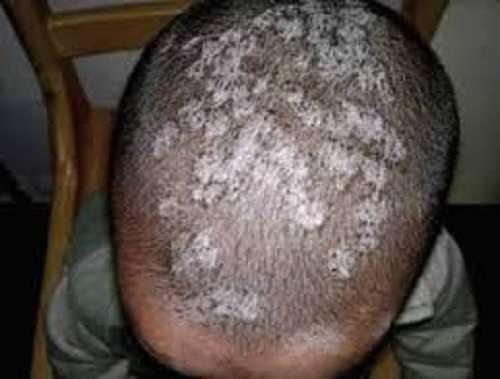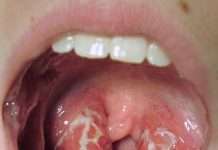
Ringworm is usually used to describe tinea corporis (ringworm of the body) or tinea capitis (ringworm of the scalp). It is also used to describe tinea infection in other locations, such as tinea cruris (ringworm of the groin).
Ringworm initially appears as discoloured, often scaly patches on affected areas. These patches typically appear red on lighter skin or brown-gray on darker skin. Symptoms vary, depending on where the infection occurs. With a skin infection, you may experience the following: itchiness; a round, flat patch of itchy skin; patches that develop blisters or pustules; patches with edges that are defined and raised; overlapping rings; and hair loss.
Types of ringworm
Doctors call ringworm different names, depending on where it appears on the body.
Ringworm of the body: Tinea corporis often appears as patches with the characteristic round ring shape on your torso or limbs.
Ringworm of the scalp: Tinea capitis often starts as isolated scaling in the scalp that develops into itchy, scaly bald patches. It is most common among children. Hair around the affected area may break or fall off, and bald patches may develop.
Ringworm of the beard: Tinea barbae affects your cheeks, chin, and upper neck and can cause bald patches. This may look like acne, folliculitis, or another skin condition. Some people experience fatigue or swollen lymph nodes.
Ringworm of the hand: Tinea manuum is usually caused by touching another affected area, such as your groin or foot. Infection of the hand may look like very dry skin with deep cracks on the palm. If the infection spreads, you may see ring-shaped patches on the back of your hand.
Jock itch: Tinea cruris is a ringworm infection of the skin around the groin, inner thighs, and buttocks. It is most common in men and adolescent boys. It usually starts as an itchy red, brown, or grey rash where your leg and body meet. The itching may intensify after exercise and may not improve after using an anti-itch cream, such as a steroid cream. The steroid cream could actually worsen the jock itch rash.
Athlete’s foot: Tinea pedis is a ringworm infection of the foot. It is frequently seen in people who walk barefoot in public places where the infection can spread, such as locker rooms, showers, and swimming pools. This starts as dry scaly skin between your toes that may spread to your sole and heel and leads to symptoms like itching, stinging, burning, as well as blistering or peeling skin, along with a foul odor.
Tinea unguium: This is a type of fungal ringworm infection of the nails. It affects toenails more than fingernails, as footwear often provides a moist, warm environment that fungi prefer. The affected nails may become thicker or discolored. They may even begin to crack or lift away from your nail bed.
Treatment
An antifungal cream can be bought from pharmacies over the counter (OTC) or prescribed. There are various types and brands, which include terbinafine, clotrimazole, econazole, ketoconazole and miconazole. These are good at clearing fungal skin infections, such as ringworm.
There is no evidence that any one cream is better than the other one. The cream should be applied to the affected areas for as long as advised. This varies between the different creams, so the instructions should be read carefully:
Clotrimazole: apply 2-3 times a day for at least four weeks.
Miconazole: apply twice a day and continue for 10 days after the skin is back to normal.
Econazole: apply twice a day until the skin is back to normal.
Ketoconazole: apply once or twice a day and continue for a few days after the skin is back to normal. Cannot be used for children.
Terbinafine: apply once or twice a day for one to two weeks. Cannot be used for children.
Alternative therapy
Although there have been reports that a chemical compound isolated from garlic was successfully used as an antifungal agent, this does not mean that garlic itself is a remedy for fungal infections. After all, the compound concentration in a single piece of garlic may be insufficient, and rubbing garlic onto the skin is more likely to irritate it.
Some also believe that applying apple cider vinegar over the affected area can help get rid of ringworm, but there have been instances where this has resulted in chemical burns to the skin, experts have warned.










